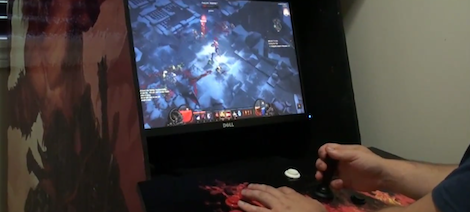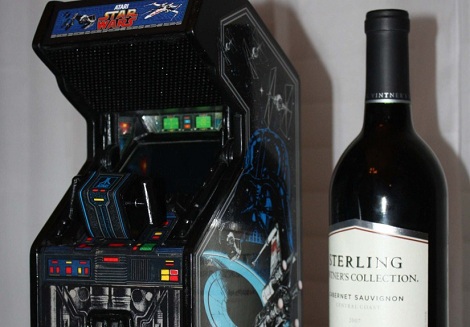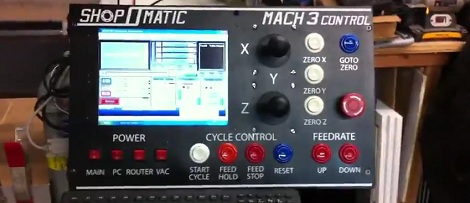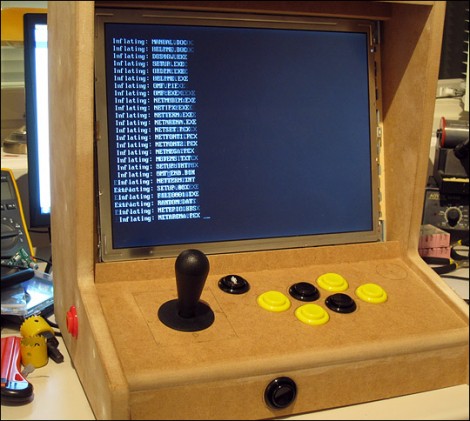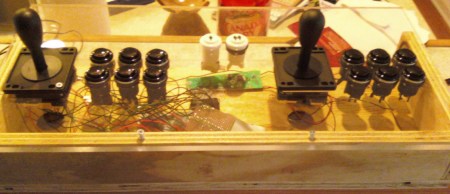MAME cabinets are simply awesome. They’re a great way to relive the stained and sticky fluorescent carpets, loud noises, and Neon signs and blacklights of old arcades. If there’s one problem with MAME cabinets, it’s that gaming has moved on from the quarter-eating cabinets of yesteryear. It simply doesn’t make sense to put Starcraft, TF2, or other popular games in an arcade cabinet.
[Dave] grew up playing Gauntlet in the arcade, but the various console ports never lived up to the experience of playing it with a joystick and buttons. When Diablo 3 came out, [Dave] knew what he had to do. He built a Diablo 3 arcade cabinet, fully playable and faithful to the dungeon crawlers of yore.
Thankfully, an old cabinet wasn’t gutted for this build; a month before the game came out, [Dave] picked up a few pieces of plywood and built himself an arcade cabinet. After applying some very nice graphics and installing buttons and a joystick, [Dave] had a fully functional Diablo arcade game that doesn’t even require quarters.
Recently, we’ve seen our share of builds that turn traditional game controls on their head, a trend we hope continues. You can check out [Dave]’s demo video after the break.

